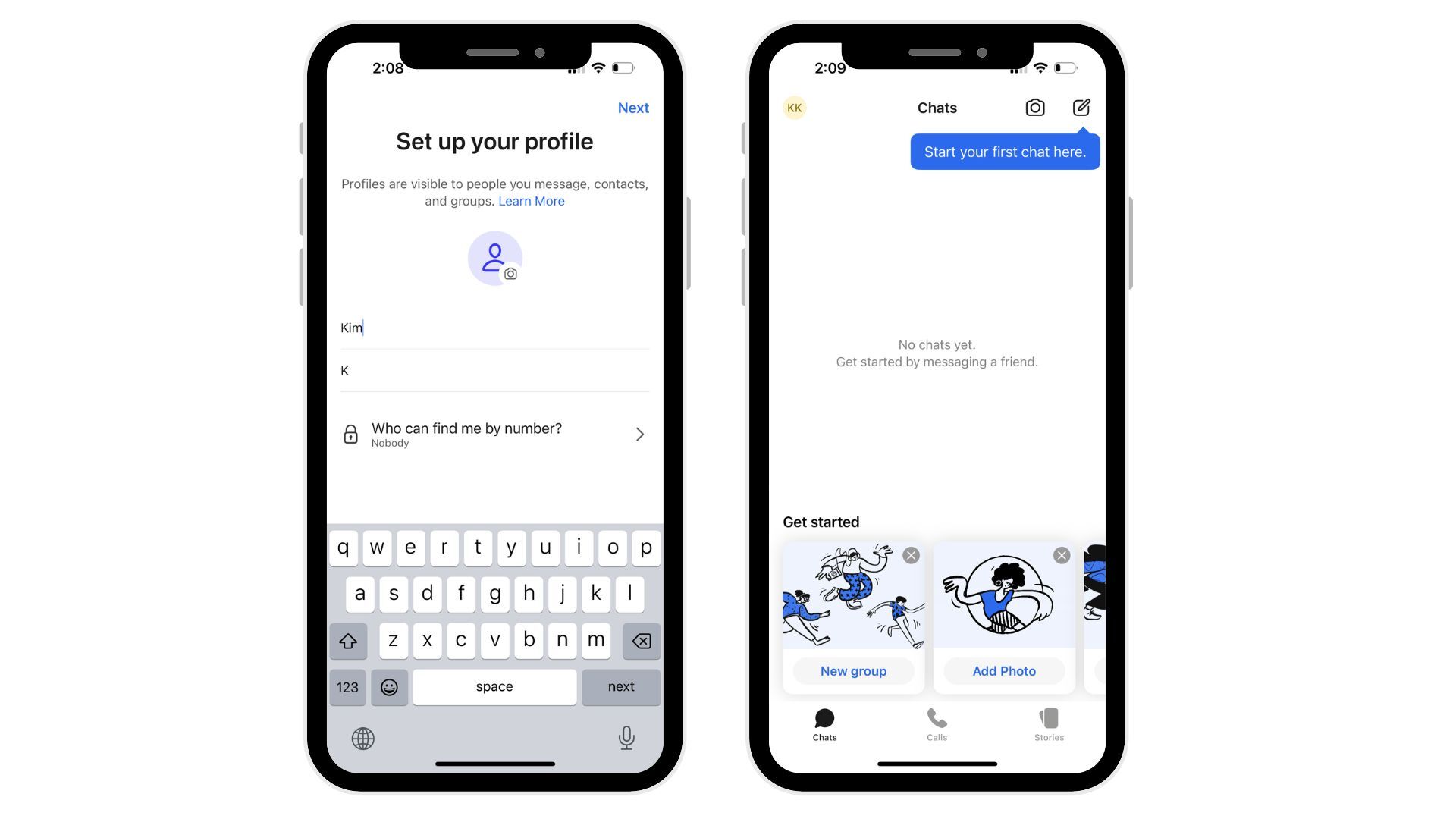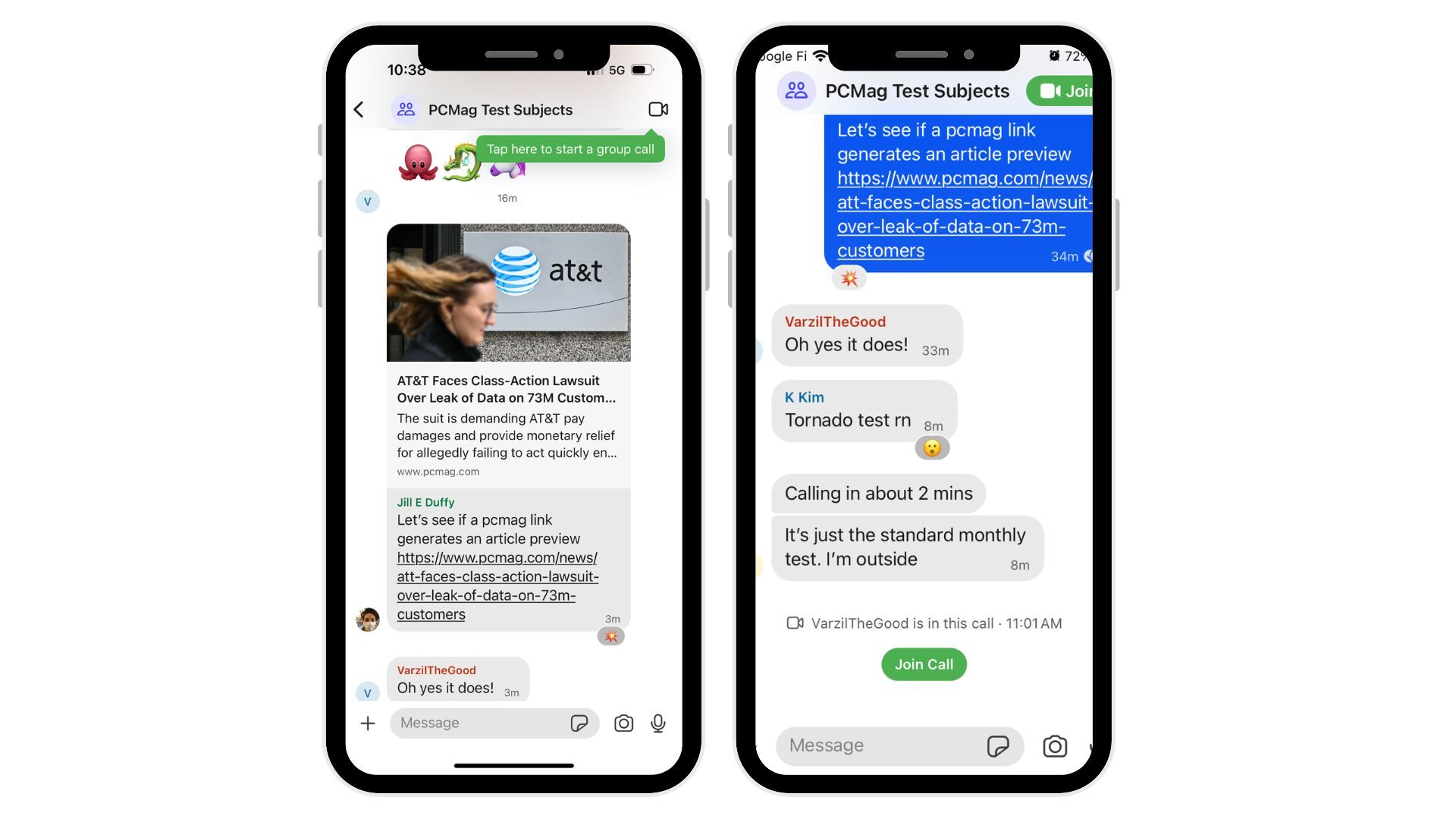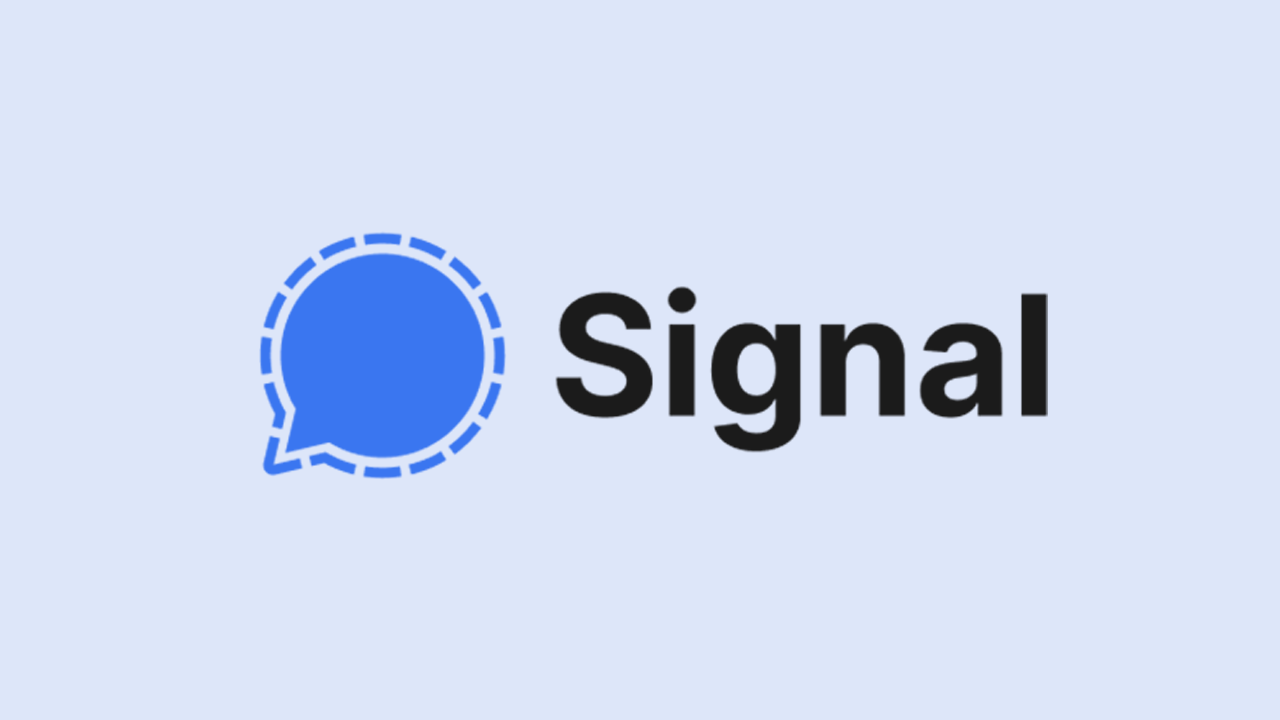-
Pros
- Free, nonprofit owned
- Group and private texting
- Conference audio and video calls
- Multi-platform availability
-
Cons
- Requires phone number for signup
Signal Private Messenger Specs
| End-to-End Encryption | For All Messages By Default |
| Requires Phone Number | |
| Supported Client Software | Android, iOS, Linux, macOS, Windows |
| Supports Custom Stickers |
From advertisers to cops, everyone is out to get your data. Instead of submitting to the surveillance capitalism panopticon, you can use an open-source private messenger like Signal to start communicating securely. This free, cross-platform app protects your messages, calls, and video chats from prying eyes and data-hungry corporations. Signal has consistently improved its features and functionality yet hasn't sacrificed its principles or the security of its customers. Among the messaging services we've reviewed, Signal strikes the best balance between security, accessibility, and fun. That makes it our Editors' Choice winner for private messaging.
Can You Trust Signal?
There are two major differences between Signal and just about every other chat application out there.
First, it's end-to-end encrypted (E2EE) by default. That means only you and your recipient(s) on Signal can read your messages. Not even the creators of Signal cannot peek inside your conversations. While other services like Facebook Messenger and Telegram include an E2EE option, Signal is one of few that make it mandatory. That said, Signal is built for privacy, not anonymity. Its main concern is ensuring you speak securely with only the people you intend, not hiding your identity.
Second, Signal has no incentive to sell your data. It's a 501(c)(3) non-profit organization registered in the US. Companies are keen to grab your data to target you for ads or simply sell that information to someone else. That's just not Signal's model. Competitor WhatsApp is also free but tied to Meta's data-mining empire.
The underlying technology, called the Signal Protocol, has been evaluated by researchers and is open-source. Its core technology has also been implemented by Meta's and Google's messaging platforms, albeit as an option. While you might not trust those companies, they have vetted Signal's technology and found it worthy.
An even stronger endorsement comes, ironically enough, from the FBI. In late 2021, a document emerged outlining what information the agency could legally obtain from various messaging platforms. This confirmed what Signal had long said: It can only provide the date a customer signed up for the service and the last time the service was used—less information than any of its competitors evaluated in the FBI document. Also, because Signal does not back up messages, it is resistant to both legal and malicious attempts to access cloud backups.
That said, Signal hasn't always had smooth sailing regarding security. In 2022, an attack on a third-party service used by Signal to verify new signups potentially revealed the phone numbers and SMS verification codes of 1,900 people. The company moved quickly to secure the data and disclose the attack—which is exactly what a company should do in this situation.
Getting Started With Signal
Signal is available as an Android app and an iOS app, with companion desktop apps for Linux, macOS, and Windows. Emphasis on companion: you must still register for Signal using a mobile phone. Your Signal message history is stored locally on your devices, but you can access your old messages on desktop platforms by scanning a QR code to link your device to your computer.
A Settings panel lets you control the app's appearance, how it stores data, and other essential features. It's also where you go to link your Signal account to a desktop companion app.
 (Credit: Signal/PCMag)
(Credit: Signal/PCMag)Signal requires a working phone number to sign up. Though Signal does not store or share your phone number, nor does it hoover up your contact lists, we don't like that Signal requires this highly personal information. Competitors like Briar, Session, and Wire don't require a phone number to sign up, though those apps aren't as feature-packed as Signal.
To get around using our real phone number to sign up for Signal, we used a Google Voice number, which worked just like a regular phone number. Another journalist managed to get around the requirement by registering a pay phone, but that's a pretty big effort just to use a private messaging app, so stick to a disposable phone number generator. If you want to keep your phone number private from others on the platform, you can create a username. In the Settings menu, you can hide your phone number from your contacts, move your account to a new phone, or designate a new phone number if needed.
When you first sign up, you're asked to create a PIN. According to Signal's FAQ, this allows you to "recover your profile, settings, contacts, and who you’ve blocked if you ever lose or switch devices." The company says this feature is designed to prevent the information from being accessible, even to the people who develop Signal. Furthermore, your chat history cannot be recovered with the PIN.
You can disable PINs in the Settings menu, and maybe you should! Your account is secured with multi-factor authentication, so you don't need the PIN. Besides, allowing a lower form of security, like a highly guessable PIN, to access your account doesn't seem like a great idea.
Private Chatting on Signal
We tested Signal on an iPhone 13 Pro, a Macbook Pro, and a Samsung Galaxy A71 5G. The app's main page shows a running list of your conversations, with the newest shuffled to the top. You can pin conversations to the top of your screen for easy access. Use the search bar at the top of the screen to look for words used in your conversations or people from your contact list.
 (Credit: Signal/PCMag)
(Credit: Signal/PCMag)Texting on Signal
If you've used a chat app in the last decade, the features and layout will be familiar to you. Text field buttons let you attach files, add privacy-respecting stickers, take and edit selfies, and record up to five minutes of encrypted audio. You can bold, underline, or italicize your chat text. You can also add visual elements like GIFs to liven up your chat windows. The Disappearing Messages option (found in the three-dot menu) lets you set a lifespan for your messages. That means your messages are automatically deleted, even from the recipient's phone.
Always remember to practice safe sexting! When you send pictures, you can choose to allow the image to be viewed indefinitely or just once by tapping the infinity symbol in the bottom left of the screen. Be aware that even disappearing messages and pics can be captured with screenshots or by taking a photo of the screen.
Signal's Group Chats
Groups work much the same as messages. You can select a few contacts or skip that and create an empty group, then add a name and a picture. Groups are encrypted, but messages to groups containing people not using Signal will not be encrypted and will only use SMS.
You can add people manually from your contacts or create a sharable link or QR code to quickly populate your new group. Newly created groups now have admins (the creator of the group by default) who can change group settings, assign other admins, approve members joining from a link, and, of course, remove other members as well. In testing, our group had no trouble communicating via text messages.
We like the Message Requests, which are alerts that appear when someone outside your contact list tries to message you. You can choose to Block, Report, or Accept the message from the sender. It's a nice way to cut down on potential scamming, spamming, or harassment on the app.
Signal's Voice and Video Chat
Video calls and group chats work across every platform Signal supports. Tap the phone or camera icon at the top of a chat to start a secure voice or video call. You switch your camera on to turn a voice call into a video chat.
 (Credit: Signal/PCMag)
(Credit: Signal/PCMag)Group Calling Features on Signal
Signal supports video conference calls with up to 40 participants, which is large enough for a friendly chat or a small group, though it can't hold a candle to Zoom. Telegram allows up to 1,000 viewers for broadcasts, but only the first 30 can share their video.
A recent update allows Signal to generate a link to a video call, a feature similar to work-friendly video conference apps such as Google Meet or Zoom. Anyone who uses Signal with access to the link can join the call immediately, instead of waiting for an invitation. The creator of the call link can choose to approve all call participants manually, or they can choose to allow anyone with a link to join in. Only the call link creator can block or remove a call participant or deactivate a call link. Unused call links expire after 90 days.
Something important to note before you use the call link feature: If your phone number visibility is set to "Everyone" in the app Settings menu, everyone who joins your call using your link can see your phone number.
As in Discord, video calls in Signal persist until everyone has left. People who drop from the video or voice call can still participate in the text chat. Voice calls aren't explicitly supported for groups, but you can just turn off your camera.
In testing, we found the video chat features straightforward to use. In just a few minutes, we connected with colleagues using an iPhone, a Mac, and an Android device, all in one video call. We also found that rejoining a video or voice chat in progress was easy if a participant's call dropped.
Signal's Social Networking Feature
Taking a page from other modern social media platforms, namely Snapchat, Instagram, and TikTok, Signal rolled out a "Stories" feature that allows you to upload photos, videos, or messages to their profile that disappear after a certain time. The feature could be helpful for group organizers or administrators who want to pass along communications to lots of people without spamming an active group chat with announcements. Sick of all the updates? Turn off Signal Stories in the app's Settings menu.
Signal's Drawbacks
Some of Signal's quirks might confuse you if you're familiar with WhatsApp or Apple Messages. For one, you can't see the previous chat history when you join a group. That's because those messages can only be read by their intended recipients, which, at the time, didn't include you.
You'll also periodically see warnings that a contact's Safety Number has changed. This means that something has occurred that required Signal to generate a new cryptographic key for your conversation. This alert could mean your messages are being intercepted in an attacker-in-the-middle scenario, or it could mean your friend got a new phone. You can tap on a friend's icon to view and confirm their safety number.
Verdict: Signal Delivers the Best of Both Worlds
Security and ease of use are often on opposite ends of the spectrum, but Signal's app remains a happy medium. The biggest drawback is its phone number requirement. Even so, we appreciate that Signal maintains a fun, polished, and popular service without compromising the core promise of secure, private communication. Accordingly, it earns our Editors' Choice award for private messaging apps.
Max Eddy contributed to this review.

